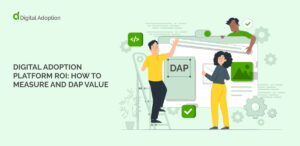Lean process mapping is an essential tool for any business that implements the lean methodology.
To affectively map processes in lean or Lean Six Sigma, it is first necessary to understand what process mapping is.
Process Mapping 101
Process mapping, or business process mapping, is similar to process modeling and business process diagrams.
A process map is a detailed diagram of the steps, resources, and roles in a business process.
Every business process map will differ in detail. Some only cover the steps involved. Others offer more insight into roles, responsibilities, and timelines, as well as detailed breakdowns of resources used.
Here a few examples of different types of process maps:
- Flowcharts are high-level overviews of processes that focus on events, decisions, and the steps involved in a process
- Swimlane diagrams offer another level of detail, by defining the business units that undertake a specific process
- Value stream maps cover the entire value chain from start to finish, mapping out roles, responsibilities, and the resources needed to complete a process
- SIPOC maps diagram the supplier, input, process, output, and customer
- Deployment maps offer a more general overview of processes and are intended for stakeholders
Process maps are not only used in lean, it should be noted. They are used in a wide number of other disciplines, including business process management, the discipline dedicated to mapping out, modeling, and managing business processes.
That being said, however, lean practitioners do use process maps quite frequently. Since lean is designed to continually optimize business processes, after all, process maps are an invaluable tool.
But what makes lean process maps different from other process maps?
Lean Process Mapping
The lean methodology has a specific focus: reducing waste.
The lean methodology, regardless of where it is applied, also focuses on maximizing customer value, improving quality, shortening timelines, and achieving similar goals that are considered “staples” in the lean method.
These goals, therefore, should take priority when creating a lean process map.
For instance, process maps should focus on reducing the different types of waste, which, in lean, includes:
- Talent. Wasted talent refers to talent that is not used as efficiently or cost-effectively as it could be. For instance, failing to use the proper talent in a project that requires a certain type of talent will result in inefficiencies, poor outcomes, and so forth.
- Transportation. Transportation can be wasted in a number of ways. For instance, inefficient delivery routes can result in wasted time, fuel, vehicle occupancy, and, ultimately, revenue.
- Time. In business, time is money. The longer a process takes to complete, the more money is lost. Process mapping can help lean practitioners understand how much time is being allocated to certain activities in a workflow or process. That information can then be used to optimize the process.
- Defects. Product defects can cause problems related to customer satisfaction and waste that comes in the form of returns, rebuilds, and other forms of waste.
- Movement. In the same way that unnecessary transportation can be costly, unnecessary or excessive movement, such as movement within a factory or on a warehouse floor, can also waste time and money.
- Inventory. Inventory refers to products that are stored in a warehouse. That storage is wasteful, since money must be spent to acquire the inventory, and as long as it is not sold, it is not bringing in revenue.
- Processing. Overwork, overproduction, duplicate work, and irrelevant work are examples of processing waste. Process maps can help lean practitioners identify points in a business process where overprocessing is occurring.
As mentioned above, lean process maps primarily focus on reducing these types of waste. When developing a process map, therefore, the emphasis will be on identifying waste. That being said, a process map can also be useful for addressing other problems resulting from a process, such as quality or customer success.
The Ideal Lean Process: Just-in-Time
The just-in-time model became popular with Japanese manufacturing, the origin of lean.
This idea aims to reduce waste by delivering products and services just in time.
For instance, rather than holding a large inventory to meet unexpected customer demand, the just-in-time model aims to streamline production and delivery. By improving the efficiency of the supply chain and delivery models, companies can spend less money on inventory, transportation, and the other forms of waste covered above.
Although the just-in-time model began in manufacturing, both lean and the just-in-time concept how been applied across a large number of business areas.
For instance, just-in-time learning refers to the idea that people should learn something just before they need it. In a business context, this can save significant time and money, especially in the digital workplace. Employees are often overwhelmed by large numbers of digital tools and workflows, and traditional training methods are simply too wasteful. For that reason, companies such as WalkMe have developed tools that deliver automated guidance directly inside the app, in the moment of need. Used appropriately, these types of training platforms can accelerate learning, reduce wasted time, and enhance employee productivity.
By mapping out your own business processes, you may be able to discover ways to apply the just-in-time model to a variety of business functions, from product delivery to employee training to customer service.
People Also Ask
-
How can lean process mapping support digital transformation initiatives?Lean process mapping clarifies workflows, helping teams identify which steps to automate—or where to apply just‑in‑time practices—making it a practical foundation for successful digital transformation.
-
Why revisit and update lean process maps regularly?Regular updates ensure maps remain accurate and aligned with changing processes and goals, supporting continuous improvement and sustained impact.
-
What if different business units use different types of process maps—how does that affect enterprise alignment?Different maps (e.g., SIPOC, value stream, swimlane) offer varied insights; aligning on map types ensures clarity across functions, roles, and resources, improving cross‑unit collaboration.
-
When should enterprises integrate lean process mapping into AI transformation roadmaps?In the early discovery phase—before automation—so teams understand current processes, identify waste, and target high‑value areas for AI‑driven improvements.

 FACT CHECKED
FACT CHECKED







